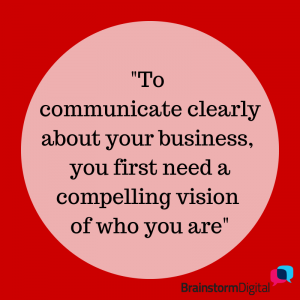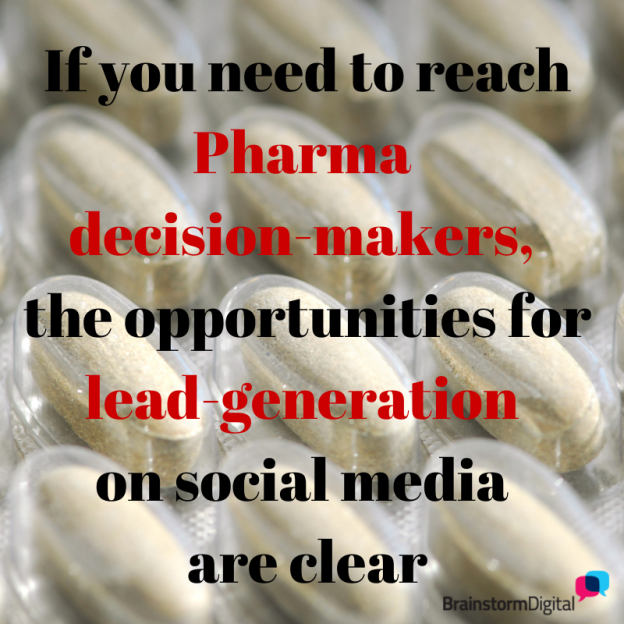 If I told you that my company “uses its capability in proprietary logic-based machine learning and chemoinformatics (INDDEx™), based on the patented SV-ILP method (Patent number 8126823), to undertake drug discovery programmes for its clients,” would you have a clue what I was talking about – at least before reading that sentence three times?
If I told you that my company “uses its capability in proprietary logic-based machine learning and chemoinformatics (INDDEx™), based on the patented SV-ILP method (Patent number 8126823), to undertake drug discovery programmes for its clients,” would you have a clue what I was talking about – at least before reading that sentence three times?
Quite possibly, if you worked in that exact area. Unlikely, for the rest of the population.
One of the biggest problems for Pharma companies trying to develop an online presence is freeing themselves from the jargon commonly used in their niche, and trying to communicate clearly to the outside world. A way of speaking that may be acceptable in their own offices, internal memos and in journals simply does not make sense to the wider public, and even to some of their colleagues and other professionals they are trying to sell to.
But while it’s easy to tell companies to “ditch the jargon”, how do you do that? And is it always necessary?
Let’s take the last question first. In principle, you want to do away with as much jargon as possible. Scientific terms, industry buzzwords and “management-speak” (there’s some jargon for you right there) make your content clunky, make you sound robotic and ensures that your audience is as limited as possible.
Some of these phrases are so widely used they’re meaningless. You have “robust processes”, “ensure timely delivery” and use “trusted partners”? So does everyone else, buddy.
On social media, where everyone is supposed to be producing regular content, but you only have a second or two to grab your audience’s attention, this is particularly problematic.
The one exception is if you are trying to reach an audience which is extremely familiar and comfortable with the jargon you are using – usually from your own very narrow niche. It might actually be helpful to the people you are trying to reach, because you are speaking their language. The key is to know your audience.
But here’s a little secret. Even when you are in the same niche, most people still don’t like text stuffed with jargon. Even if your audience understands every word, jargon will always have less impact than simpler, more straightforward language.
So how do you do that?
I could give you a lot of advice about writing skills: Avoid acronyms… Use an editor… Stick to short sentences… Could your grandmother understand what you’re writing? It’s all valid.
But there is one question that you need to ask yourself before you ever get to the writing stage. If the answer to this is clear, it will vastly help all your communications.
What are you actually selling?
The answer is not the name of your product. It’s not a “system”. It’s not a “solution”.
What I really want to know is, what benefit does it give your clients? What problem do you solve for them?
For example, if you provide artwork for pharmaceutical products, you are not just making a tablet pack look good (while complying with all regulations). You are helping pharmaceutical companies forge a strong image, making their products attractive and instantly recognisable to their clients, so that they will know and trust the brand.
If you consult companies on how to get their products through a regulatory process, the real benefit is that you are ensuring their product will actually come to market – because otherwise they don’t have a business.
If you help companies manage medical rep teams, you might be helping managers free up time to develop more business.
To get to the core of what you do, you need to constantly ask yourself: How does my product help my clients? Why is it necessary?
But hold on – how will this help your writing? It’s simple. If you are going to communicate clearly with your clients about your business, you first need a really simple, compelling vision of who you are, what you are selling – and what your products or services might mean to others.
If you can clarify and focus on what makes your company meaningful, you are less likely to harp on technical details, to rely on definitions and formulations others have developed for you, and to use language that is opaque to outsiders.
Here, for example, is Orbana Pharma’s LinkedIn company profile:
Orbona Pharma Ltd is a privately held start up specialist pharmaceutical company dedicated to improving the lives’ of children with rare diseases. Established in late 2011 Orbona Pharma is developing two late stage drugs to treat a number of Orphan diseases.
Between 50%-90% of medicines administered to children have not been developed for them (source: EMA and Eurodis) and often Medicines used are those for adults; administered to children by decreasing quantities based on weight, which can be extremely hazardous and is far from ideal. Orbona Pharma is working to address this.
Orbona Pharma is working on two late stage drugs in oncology and immunology and is developing a pipeline of other candidates for development.
The copy isn’t perfect – people from outside the industry will have no clue what “Orphan diseases” are, for example. But everyone can understand exactly what they do: They help sick children with rare diseases.
They don’t have any further content on their LinkedIn page, but now that their vision is clear, they could potentially go on to post powerful material about these children, the pioneers in their industry, the diseases they are trying to eradicate, the challenges for their doctors etc, depending on who they are trying to reach. They have a great narrative to build on.
Now imagine if they’d defined themselves by describing their “diversified offerings” and “innovative research policy”? They’d be stuck forever forever discussing the latest regulatory hurdle they have overcome.
This does not guarantee they will never again use jargon – certainly not. But understand how you are relevant to people’s lives, and clear writing may follow. Without it, you have far less chance.
What are your tips for writing without jargon? Please share in the comments!
If you liked this piece, you might enjoy:
- Is email more effective for Pharma than social media?
- Relax! It’s okay for Pharma to go slow on social media
- 9 ways Pharma can use visuals to boost its social media presence







